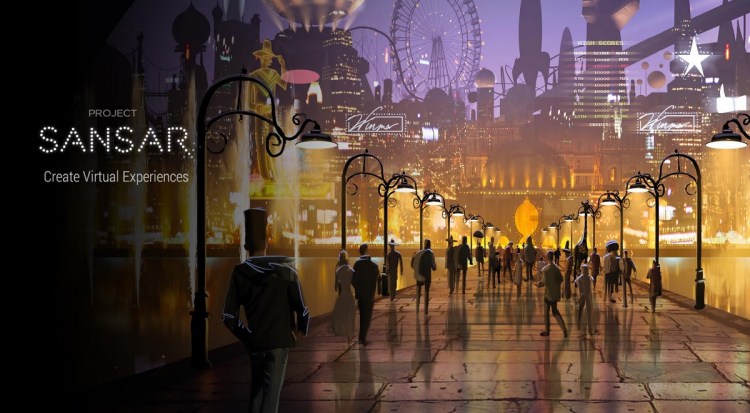Second Life creator Linden Lab is announcing today that it has begun inviting creative people to test its new virtual reality world, code-named Project Sansar.
Project Sansar should debut to the general public in 2016, and its aim is to democratize virtual reality as a creative medium. The platform aims to empower people to easily create, share, and monetize their own multi-user, interactive virtual experiences, without requiring engineering resources.
Linden Lab said the platform will enable professional-level quality and performance with “exceptional visual fidelity, 3D audio, and physics simulation.”
Project Sansar will be optimized for VR headsets like the Oculus Rift, but also accessible via PCs and (at consumer launch) mobile devices.
Linden Lab was founded in 1999 and it triggered huge interest in virtual worlds. After a big shakeout, Linden Lab’s Second Life was one of the survivors. But its technology looks a bit backward today, and Project Sansar is an attempt to return to the high ground of entertaining virtual experiences.
Project Sansar will reportedly have exploration, socializing, and other experiences made possible through expressive avatars, using text, and voice chat. And it will make it easy and fun for users to create their own social VR experiences, eliminating the need to find a professional developer to build such an experience today.
Linden Lab said users won’t have to worry about issues such as hosting and distribution, multiuser access and communication systems, virtual currency, and regulatory compliance.
“We want to lower the barrier of entry for VR experience creation,” said Linden Lab CEO Ebbe Altberg in a statement. “Project Sansar will do for virtual experiences what WordPress has done for the web: empower a broad range of people to create with professional quality and reach global audiences.
“By greatly expanding who can create virtual experiences, Project Sansar will also extend the value of VR to a wide variety of use-cases – from gaming and entertainment to education, architecture, art, community-building, business meetings, healthcare, conferences, training, and more.”
At the outset, the creators invited to help test Project Sansar will create 3D content using Autodesk’s Maya software. At the consumer launch next year, Project Sansar will support a variety of third-party creation tools as well as native building options, so that creators can work with their preferred software.
VentureBeat's mission is to be a digital town square for technical decision-makers to gain knowledge about transformative enterprise technology and transact. Learn More

